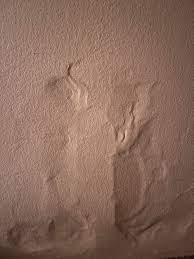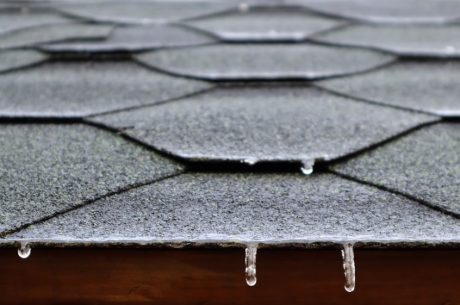Lawrenceville, GA, endures long, hot summers with high humidity—creating a climate that challenges both your comfort and the durability of your home. Understanding how heat and moisture affect building materials, HVAC systems, and indoor health is essential for safeguarding your property and well‑being.

Table of Contents
1. Georgia’s Climate: Hot, Humid, and Demanding
Located in the humid subtropical climate zone, Lawrenceville experiences high temperatures often exceeding 95 °F, coupled with humidity levels routinely above 60%. This “heat dome” effect traps heat and moisture in the air, making the house feel like it’s overheating—even when the thermostat says otherwise.
Excessive temperature and humidity create a perfect storm of moisture intrusion, mold growth, and structural stress—especially during mid‑summer when energy bills soar, outdoor air is thick with moisture, and ventilation struggles to keep pace.
2. Structural Impacts of Heat & Humidity
🔧 Foundation & Soil Movement
Soil beneath a home expands and contracts with moisture and heat. Prolonged dryness leads to soil shrinkage, while subsequent storms swell the soil—causing foundation shifts, cracks in brick veneer, and drywall splits. Foundation damage is common in Southern homes without controlled watering programs to maintain balanced soil moisture levels.
🏠 Roof Pressure & Material Degradation
Georgia summers with roof surface temperatures near 160 °F can degrade asphalt shingles—leading to cracking, curling, and loss of waterproofing. Roof rot can follow as algae and moss take hold in humid conditions, eroding shingles and underlayment over time Findlay Roofing+1Southern Living+1.
🌿 Siding, Paint & Exterior Materials
Humidity promotes mold, mildew, and algae growth on siding, soffits, and trim. Moisture-laden air settling in shaded areas causes staining and decay. Painted surfaces may blister or peel, making your home look aging well before its time.
Wood Damage – Doors, Windows & Flooring
Wood expands in high humidity, leading to warped doors and windows that stick shut. Seals can fail and caulking deteriorate. Hardwood floors may buckle or separate from subfloors if humidity isn’t controlled between 35–55%.
Drywall & Interior Surfaces
Wallboard and plaster become weak and soft when exposed to persistent moisture. Condensation on interior surfaces can cause bubbling paint or wallpaper, sagging ceilings, and visible staining—often signs of hidden interstitial condensation within walls.
3. Indoor Air, Health & Mold Risks
Mold Growth & Respiratory Issues
Warm, humid air is the perfect environment for mold species like Cladosporium, Aspergillus, and Penicillium. Mold releases spores and mycotoxins into the air, irritating sinuses, lungs, and eyes—triggering asthma, allergies, and in rare cases, hypersensitivity pneumonitis or chronic rhinosinusitis. Damp conditions also support bacterial growth, increasing respiratory infections and allergic reactions.
Poor Indoor Air Quality & Odors
Humidity traps dust, allergens, and musty odors in the home. Condensation inside ducts or on coils promotes mildew growth that circulates throughout the house—even when air conditioning is running.
HVAC Strain & Energy Waste
With indoor humidity above 60%, your HVAC must run longer to extract moisture—raising energy costs and wearing components faster. Issues like clogged condensate drains, short-cycling, and frozen coils are common. Efficiency drops and utility bills climb linearly with rising outdoor humidity and heat.
4. Hidden Moisture Threats in Crawl Spaces & Attics
Unconditioned crawl spaces and attics often lack adequate ventilation and insulation—creating stagnation zones where humidity builds unnoticed. Moisture intrusion here leads to:
- Standing water or damp soil beneath the foundation
- Mold on floor joists and subfloor
- Condensation inside ceiling cavities and insulation
- Thermal bridging that reduces insulation effectiveness and promotes moisture condensation on colder interior surfaces
These issues can severely compromise structural integrity over time.
5. Quantified Damage Costs & Risks
- Mold remediation in Atlanta‑area homes often runs $3,000 to $6,000—depending on severity and affected square footage.
- HVAC systems overloaded by humidity may reduce lifespan by 3 to 5 years, or increase energy bills by 10–20% during peak months.
- Foundation repairs tied to soil movement can cost $5,000 to $15,000+—especially for brick homes and slab foundations common in Lawrenceville.
Delaying intervention multiplies costs.
6. Signs Your Lawrenceville Home Needs Attention
If you observe any of the following—your home may be under stress from heat & humidity:
- Persistent condensation on windows, walls, or ceilings
- Mold or mildew stains, especially in basements, bathrooms, or crawl spaces
- Musty or stale indoor air
- Warped wooden doors, windows, or flooring
- Peeling paint or wallpaper in corners
- HVAC cycling irregularly, dripping, or producing musty smells
- Dark streaks, algae, or green mold on roofing or siding
7. Effective HOA & Homeowner Strategies
✅ Maintain Elevated Ventilation
Install and run exhaust fans in bathrooms, kitchens, and laundry rooms. Ensure attic soffit and ridge vents are functioning, and operate whole-house fans when outside humidity is lower.
✅ Utilize Dehumidifiers Where Needed
Portable and whole‑house dehumidifiers are crucial during Georgia’s summer season. These alone can prevent mold growth by maintaining indoor humidity between 35–55%.
✅ Seal It Up
Apply caulk and weatherstripping around doors, windows, attic hatches, and plumbing penetrations to lock out humid air infiltration.
✅ Keep Gutters and Roof Clean
Clear debris from gutters and roof surfaces to prevent water buildup and algae growth. Trim back branches to improve sunlight exposure and reduce trapped moisture.
✅ HVAC Cleaning & Maintenance
Schedule annual inspections to clean condensate lines, inspect coils, and replace filters. Consider HVAC upgrades like variable-speed systems for better humidity control and energy efficiency
✅ Monitor & Address Moisture
Use moisture meters or hygrometers in vulnerable areas such as crawl spaces and basements. Proactively install vapor barriers or dehumidifiers in these zones for long‑term protection .
8. When to Call PuroClean of Lawrenceville
At the first sign of mold, condensation, or structural deterioration, reach out to PuroClean of Lawrenceville. Our expert services include:
- Moisture detection & mapping using thermal imaging and meters
- Mold inspection, remediation & prevention treatments
- Structural drying, dehumidification, and air scrubbing
- HVAC duct cleaning, sanitization, and humidity control assessment
- Board-up, water mitigation, and repair coordination if heat‑triggered leaks or floods occur
We help you not only mitigate immediate damage—but also implement preventative strategies to protect your home long-term.
9. Why Proactive Response Matters
The CDC advises that mold and bacteria grow within 48 hours of moisture exposure . Waiting too long can allow hidden mold behind walls or beneath floors to flourish, weakening structure and risking health.
Professional mitigation within this early window can save thousands in repairs, reduce health risks, and preserve property value.
10. Final Thoughts: Stay Ahead of the Heat
Weather conditions in Lawrenceville don’t sleep—and neither do the risks they bring. From silent drywall damage to mold that spreads unseen, your home is under constant pressure during the summer months.
By combining good ventilation, humidity control, routine maintenance, and timely professional support, you protect your structural investment and create a healthy environment for your family.
Let PuroClean of Lawrenceville be your partner in combating damage: offering expert assessment, remediation, and prevention services tailored to Georgia’s challenging climate.
📞 Learn More & Schedule an Assessment
Contact us today to schedule a free home moisture inspection. Stay cool. Stay safe. Stay protected.



 PuroClean of Lawrenceville
PuroClean of Lawrenceville